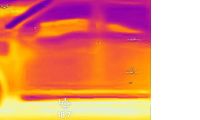Several years back when I first experienced idle autostop behind the wheel of Acura MDX Touring, I hated the darn thing. Back then the feature was relatively new. Although it could be found on most premium cars and SUVs, the idle auto stop hadn’t made its way into the sub-premium segment. Reportedly, as disruptive and rough as the feature was at the time, automakers looked to idle auto-stop to save fuel. Me, I more often than not turn it off. I’ll pay for that extra ½ mile per gallon of gasoline.
In today’s high-tech vehicle, idle autostop has been (mostly) seamlessly integrated
Truthfully, in last premium Honda I drove, I didn’t notice the idle autostop. But that was the 2018 Clarity PHEV. It has no transmission and is primarily electric. American Honda’s tech video was produced in direct relationship to the well-received Honda Pilot.
Reinvented in 2016, Pilot is Honda’s answer to the 3-row family hauler, sporting a near-premium interior, V6 power, and one of the better variable traction all-wheel-drive options in the midsize SUV segment. Granted, I did depress the off-button on Pilots’ idle autostop the last time I reviewed one; finding it to be a bit disruptive at stop signs.
I’m going to assume that Honda engineering has smoothed it out a bit. None the less, the following Video explaining the ins-and-outs of Pilot’s idle autostop is very comprehensive.
How's your Honda Pilot? Thanks for reading and sharing Torque News.











